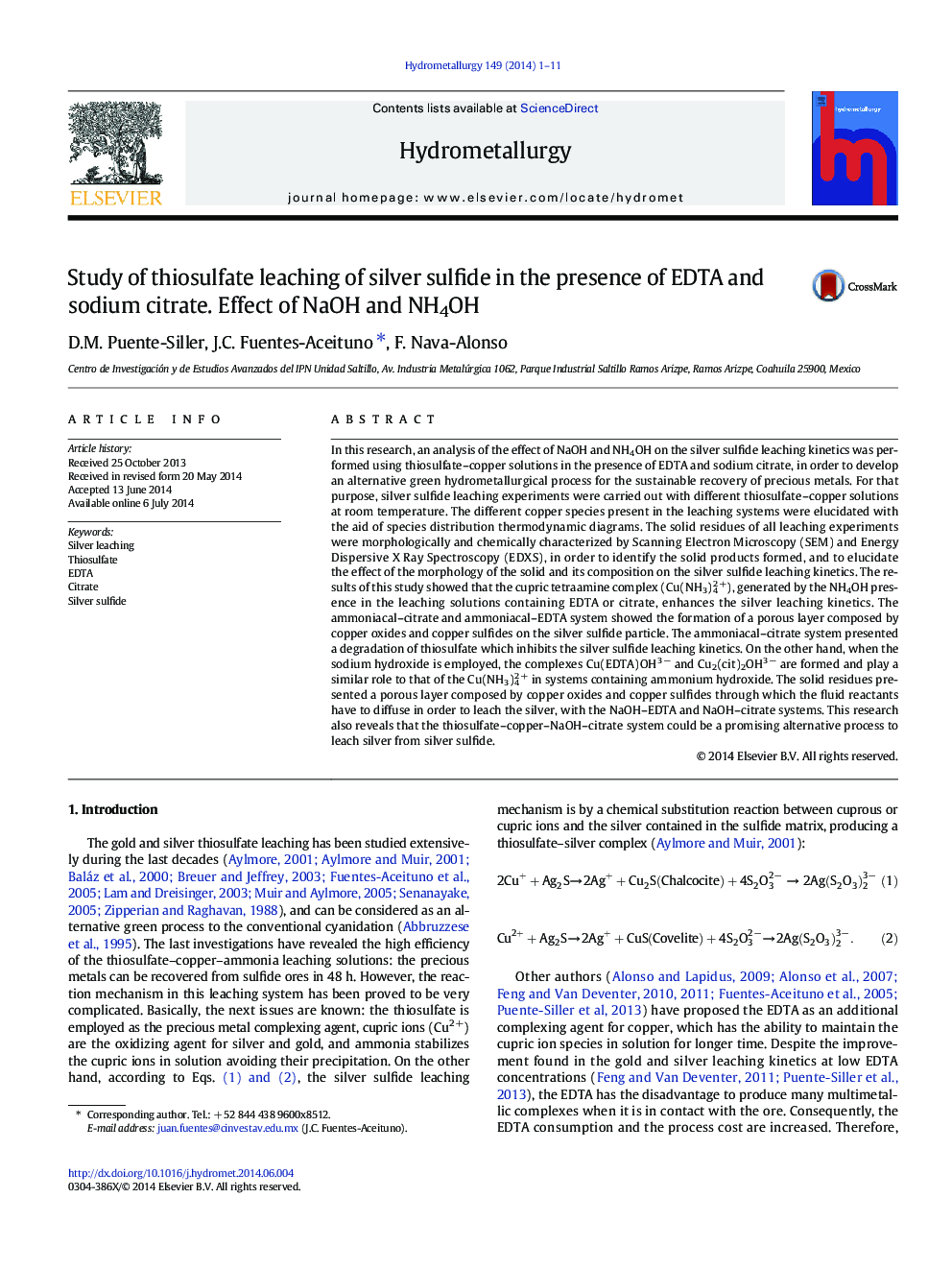| کد مقاله | کد نشریه | سال انتشار | مقاله انگلیسی | نسخه تمام متن |
|---|---|---|---|---|
| 212234 | 462038 | 2014 | 11 صفحه PDF | دانلود رایگان |

• Porous layers of copper species are formed in the EDTA systems with NaOH and NH4OH.
• Porous and compact layers of copper species are formed in the NaOH citrate systems.
• Silver leaching is inhibited in the citrate and EDTA systems at 5 h.
• Thiosulfate is partially decomposed in the ammoniacal–citrate systems.
• Ammoniacal EDTA and citrate systems are more efficient than NaOH systems.
In this research, an analysis of the effect of NaOH and NH4OH on the silver sulfide leaching kinetics was performed using thiosulfate–copper solutions in the presence of EDTA and sodium citrate, in order to develop an alternative green hydrometallurgical process for the sustainable recovery of precious metals. For that purpose, silver sulfide leaching experiments were carried out with different thiosulfate–copper solutions at room temperature. The different copper species present in the leaching systems were elucidated with the aid of species distribution thermodynamic diagrams. The solid residues of all leaching experiments were morphologically and chemically characterized by Scanning Electron Microscopy (SEM) and Energy Dispersive X Ray Spectroscopy (EDXS), in order to identify the solid products formed, and to elucidate the effect of the morphology of the solid and its composition on the silver sulfide leaching kinetics. The results of this study showed that the cupric tetraamine complex (Cu(NH3)42 +), generated by the NH4OH presence in the leaching solutions containing EDTA or citrate, enhances the silver leaching kinetics. The ammoniacal–citrate and ammoniacal–EDTA system showed the formation of a porous layer composed by copper oxides and copper sulfides on the silver sulfide particle. The ammoniacal–citrate system presented a degradation of thiosulfate which inhibits the silver sulfide leaching kinetics. On the other hand, when the sodium hydroxide is employed, the complexes Cu(EDTA)OH3 − and Cu2(cit)2OH3 − are formed and play a similar role to that of the Cu(NH3)42 + in systems containing ammonium hydroxide. The solid residues presented a porous layer composed by copper oxides and copper sulfides through which the fluid reactants have to diffuse in order to leach the silver, with the NaOH–EDTA and NaOH–citrate systems. This research also reveals that the thiosulfate–copper–NaOH–citrate system could be a promising alternative process to leach silver from silver sulfide.
Journal: Hydrometallurgy - Volume 149, October 2014, Pages 1–11